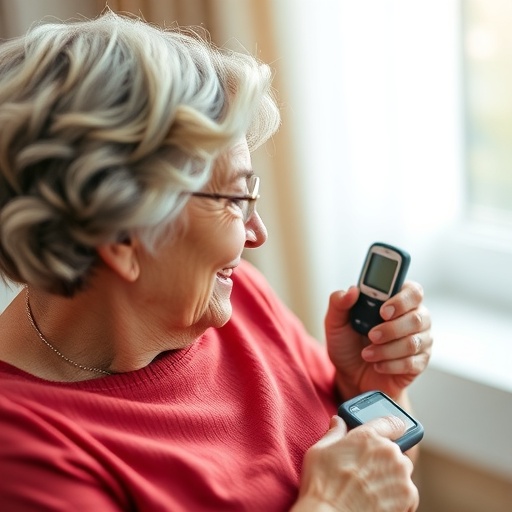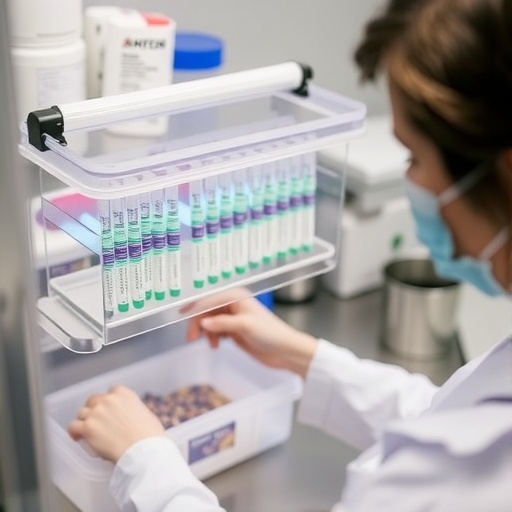PROTECT YOUR DNA WITH QUANTUM TECHNOLOGY
Orgo-Life the new way to the future Advertising by Adpathway
As the population ages, the prevalence of diabetes among older adults has risen sharply, creating an urgent need for effective management strategies tailored to this demographic. A recent narrative review has shed light on an innovative approach, namely Continuous Glucose Monitoring (CGM), which has the potential to transform diabetes management in older adults. This review not only discusses the benefits of CGM technology but also explores its implications for the clinical care of seniors grappling with diabetes.
Continuous Glucose Monitoring systems provide real-time data on glucose levels, empowering patients and health care providers to make informed decisions regarding diabetes management. The significance of this technology lies in its ability to provide comprehensive insights into glucose fluctuations throughout the day and night, bridging the gap in traditional monitoring methods that often rely on sporadic finger-stick tests. For older adults, these automated insights can significantly enhance the quality of their diabetes care and health outcomes.
One of the primary advantages of CGM is its capability to detect patterns in glucose levels that may go unnoticed with conventional monitoring. For older adults, this information is critical in recognizing hypoglycemia and hyperglycemia events, which can have severe consequences if left unmonitored. The review indicates that timely alerts from CGM systems can potentially avert hospitalizations and the associated complications of acute glycemic events, thus improving the overall health and well-being of older adults.
Moreover, the review emphasizes the role of CGM in fostering patient engagement and self-management. The ease of accessing real-time glucose data empowers older patients to take a proactive approach in managing their diabetes. Through the integration of apps and digital tools, older adults can visualize their glucose data over time, engaging more effectively with their treatment plans. This shift not only enhances their understanding of diabetes but also promotes a sense of autonomy in managing their chronic condition.
The economic implications of CGM technology are also noteworthy. The review highlights that while upfront costs may be a consideration for health systems and patients alike, the long-term benefits of reduced complications and hospital admissions can justify the investment. As health care systems strive for cost-effective solutions, the implementation of CGM in older adults represents both an innovative approach to care and a strategic financial decision.
Transitioning to the specifics of how CGM can be integrated into clinical practice for older patients, the review outlines several key strategies. It discusses the necessity of personalized approaches tailored to the unique needs and health profiles of older adults. Factors such as cognitive function, vision impairment, and the presence of multiple comorbidities must be taken into consideration when establishing CGM protocols for older patients. A one-size-fits-all approach can potentially lead to mismanagement of diabetes and, consequently, adverse health outcomes.
Furthermore, the review presents evidence from clinical studies demonstrating the safety and efficacy of CGM in older populations. It discusses trials that reported significant reductions in HbA1c levels among patients using CGM compared to those relying solely on traditional blood glucose monitoring methods. The data garnered from these studies support the notion that CGM is not just a technological advancement but a clinically significant tool that can impart substantial benefits to diabetes management.
As diabetes care continues to evolve, the importance of interdisciplinary collaboration becomes evident. The review advocates for a team-based approach, incorporating endocrinologists, geriatricians, dietitians, and diabetes educators, all of whom play vital roles in facilitating effective CGM implementation. Each professional brings unique expertise, which can enrich the diabetes care experience for older adults and optimize their health outcomes.
Challenges associated with CGM, particularly in older adults, are also addressed in the review. Issues such as sensor accuracy, technology adoption barriers, and potential discomfort with wearing devices must be navigated carefully by health care providers. Understanding and mitigating these challenges will be essential in ensuring widespread acceptance and efficacy of CGM among older patients.
Moreover, the review does not shy away from discussing the need for ongoing education and support. It highlights the necessity for health care providers to equip older adults with the knowledge and skills required to leverage CGM technology effectively. Regular follow-up appointments and educational resources can significantly enhance patients’ confidence in using CGM, paving the way for successful diabetes management.
The transformative potential of CGM in diabetes management for older adults suggests a compelling vision for the future of diabetes care. As awareness of its benefits continues to grow, there’s an expectation that CGM will become a standard of care, much like insulin therapy has. This evolution will likely encourage further research and development in glucose monitoring technologies, ultimately leading to even more innovative solutions for managing diabetes effectively.
In conclusion, this narrative review offers a comprehensive examination of Continuous Glucose Monitoring systems and their role in improving the health outcomes of older adults with diabetes. The implications of this technology extend beyond just glucose metrics; they encompass a holistic improvement in diabetes care that is tailored to the needs of an aging population. As the global diabetes crisis looms, embracing innovative technologies like CGM could herald a new era in chronic disease management.
Subject of Research: Continuous Glucose Monitoring (CGM) in Older Adults with Diabetes
Article Title: Narrative Review: Continuous Glucose Monitoring (CGM) in Older Adults with Diabetes
Article References: Wilson, A., Morrison, D., Sainsbury, C. et al. Narrative Review: Continuous Glucose Monitoring (CGM) in Older Adults with Diabetes. Diabetes Ther 16, 1139–1154 (2025). https://doi.org/10.1007/s13300-025-01720-z
Image Credits: AI Generated
DOI: https://doi.org/10.1007/s13300-025-01720-z
Keywords: Continuous Glucose Monitoring, Diabetes Management, Older Adults, Health Care Technology, Patient Engagement.
Tags: automated glucose monitoring systemsbenefits of CGM technologyclinical care for diabetic seniorscomprehensive insights into glucose fluctuationsContinuous Glucose Monitoring for seniorsdiabetes management strategies for older adultsenhancing health outcomes for elderly diabeticsglucose monitoring for elderly patientsimplications of CGM in diabetes treatmentinnovative diabetes management for aging populationreal-time glucose data for diabetes carerecognizing hypoglycemia in senior diabetics


 5 hours ago
5
5 hours ago
5





















 English (US) ·
English (US) ·  French (CA) ·
French (CA) ·